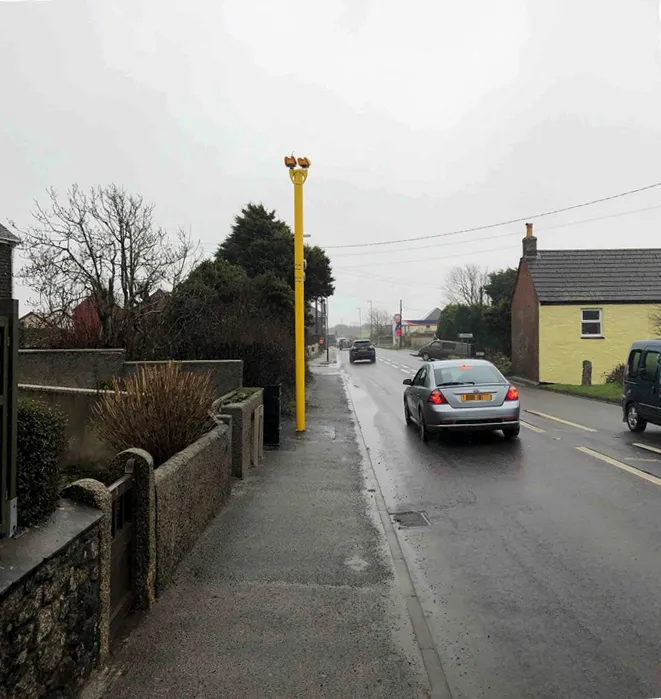Applications in the field of enforcement are a mix of road safety technology, law and social impacts. Best practice is not necessarily defined by geographical area, but rather to the way the aforementioned factors are balanced by authorities. Enforcement practice can be described as ‘best’ where a system or operation is valuably applied in terms of road safety improvement while gaining overall public acceptance. In Italy, a land of frequent legal disputes around traffic enforcement, a number of discrete exa
March 16, 2012
Read time: 3 mins
Applications in the field of enforcement are a mix of road safety technology, law and social impacts. Best practice is not necessarily defined by geographical area, but rather to the way the aforementioned factors are balanced by authorities.
Enforcement practice can be described as ‘best’ where a system or operation is valuably applied in terms of road safety improvement while gaining overall public acceptance. In Italy, a land of frequent legal disputes around traffic enforcement, a number of discrete examples of good practice present lessons for others to follow.
Some enforcement applications are easily recognised by all road users, such as83 Kria’s T-ID automatic license plate recognition system applied to enforce vehicle access control in many Italian town and city centres. This traffic code law is perceived by most people in Italy to have brought a great improvement to safety and quality of life. An important lesson here, is that when a law brings substantial tangible benefit, it is well accepted.
Other applications are more challenging but can still be considered as best practice. Usually, speed and red light detections, even if related to more dangerous infringements, are not so readily accepted, because people have no immediate evidence of the related benefit of safe driving behaviour. Instead, a frequent response to enforcement is to accuse authorities of inflicting abuse.
Some Kria devices (T-RED red light enforcement cameras) are used by Tiziano Boselli, an Italian local police commander in the Province of Milan. He has used red light and speed enforcement for several years now and monitored trend curves of many road traffic parameters. Since T-REDs were installed, the number of accidents has evidently dropped in Milan by about 20% per year and this trend can be reasonably expected to continue. Boselli believes that the public administration must keep all drivers informed of the existence and reasoning of Milan’s overall road safety and enforcement strategy – and its positive results.
Traffic monitoring and enforcement devices can provide more than just violation detection. Their use should be extended to ITS and security fields. By this means the public and both public and private sectors may appreciate more the benefits of these types of device.
Kria T-EXSPEED monitoring cameras have been installed on highways in the Region Valle d’Aosta for gathering traffic speed statistics, identifying dangerous goods, vehicle counting and classification as well as detection of black-listed license plates. Information collected is separated at origin and sent to different relevant destinations, such as various regional authorities’ servers and control rooms, including the region’s fire department. Costs for installing and operating the devices are shared among the stakeholders, but the data is strictly and securely managed by each.
The lesson we learn from this example of best practice is that enforcement or monitoring devices can and must be demystified; they must appear to all as good multi-purpose tools for use by open minded public administrations.
Enforcement practice can be described as ‘best’ where a system or operation is valuably applied in terms of road safety improvement while gaining overall public acceptance. In Italy, a land of frequent legal disputes around traffic enforcement, a number of discrete examples of good practice present lessons for others to follow.
Some enforcement applications are easily recognised by all road users, such as
Other applications are more challenging but can still be considered as best practice. Usually, speed and red light detections, even if related to more dangerous infringements, are not so readily accepted, because people have no immediate evidence of the related benefit of safe driving behaviour. Instead, a frequent response to enforcement is to accuse authorities of inflicting abuse.
Some Kria devices (T-RED red light enforcement cameras) are used by Tiziano Boselli, an Italian local police commander in the Province of Milan. He has used red light and speed enforcement for several years now and monitored trend curves of many road traffic parameters. Since T-REDs were installed, the number of accidents has evidently dropped in Milan by about 20% per year and this trend can be reasonably expected to continue. Boselli believes that the public administration must keep all drivers informed of the existence and reasoning of Milan’s overall road safety and enforcement strategy – and its positive results.
Traffic monitoring and enforcement devices can provide more than just violation detection. Their use should be extended to ITS and security fields. By this means the public and both public and private sectors may appreciate more the benefits of these types of device.
Kria T-EXSPEED monitoring cameras have been installed on highways in the Region Valle d’Aosta for gathering traffic speed statistics, identifying dangerous goods, vehicle counting and classification as well as detection of black-listed license plates. Information collected is separated at origin and sent to different relevant destinations, such as various regional authorities’ servers and control rooms, including the region’s fire department. Costs for installing and operating the devices are shared among the stakeholders, but the data is strictly and securely managed by each.
The lesson we learn from this example of best practice is that enforcement or monitoring devices can and must be demystified; they must appear to all as good multi-purpose tools for use by open minded public administrations.










